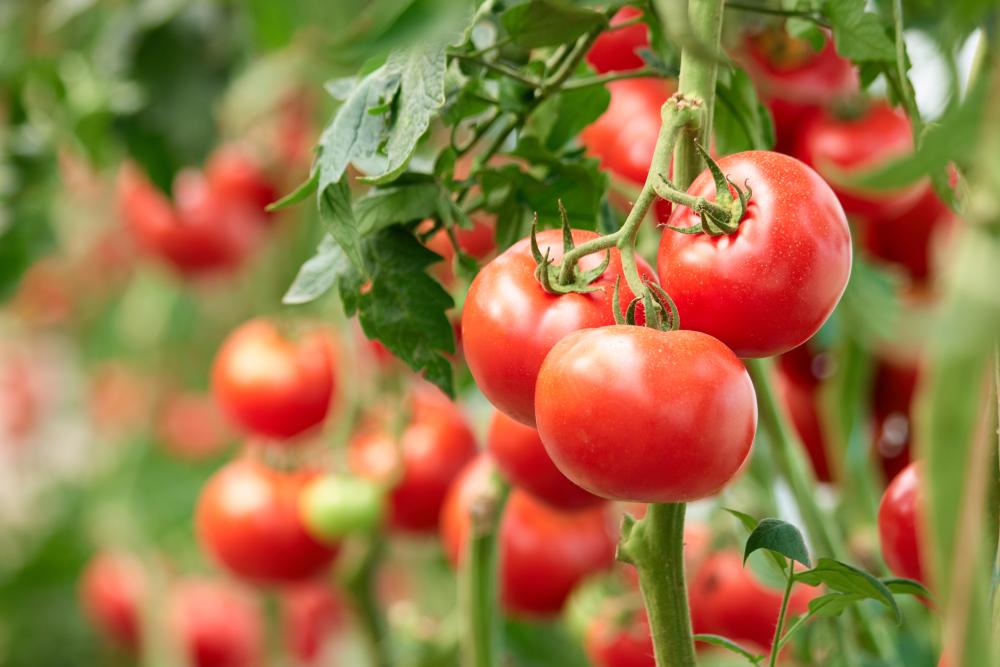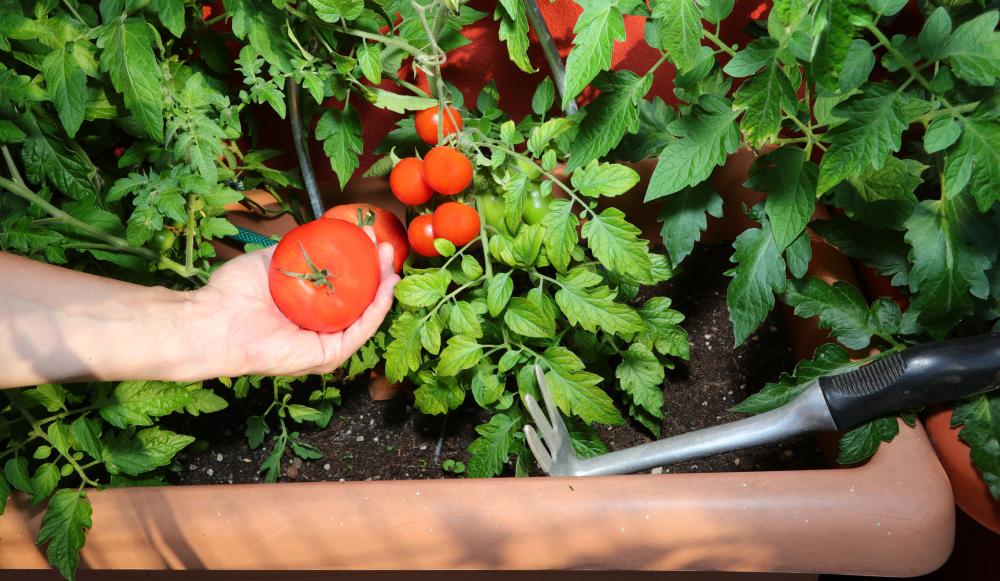Top Tomato Growing Problems And How To Solve Them
Tomatoes are the backbone of many cuisines. Italian cuisine, for example will not be what it is today without the red orbs. Take tomatoes out of the equation, and you won’t have pasta, pizza, or the famous Italian sauce.
The same applies to many other cuisines that have found this versatile fruit too delicious to resist. And if you do any form of home cooking, you undoubtedly have used tomatoes in many recipes. Or you just ate it raw or cut it into salads.
Most gardeners like to grow tomatoes in their gardens. However, tomatoes are notorious for having too many growing issues. In fact, whole books were written about the different diseases and problems you might encounter when growing this popular fruit. In this article, we cover the top tomato growing problems and how to fix them.
Black Stems On Tomatoes
When black spots cover the stems of tomatoes, it’s a sign that the plant is under attack by any of several fungal strains. In fact, there are many tomato diseases that all result in black spots appearing on the stems. Here are some of them.
- Alternaria Stem Canker: The first spots appear at the soil level around the base of the plant. The spores usually live in the soil or on debris in the garden. As the infection spreads, the spots join to cover large areas of the stems. It’s a lethal disease, and the tomato plant rarely survives it.
- Bacterial Canker: This disease is caused by Clavibacter michiganensis. The bacteria can infect the plants through contaminated gardening tools or infected seeds. The black spots appear anywhere on the plant. You should sterilize all tools you use and dispose of old tomato plants by burning them.
- Early Blight: This fungal infection is the handiwork of Alternaria solani. The fungus prefers humid and cool conditions. It spreads in the form of black spots on the leaves and fruits of the plant. If left untreated, it could damage the crop and kill the plants.
- Late Blight: The fungus that causes this disease thrives in warm and humid conditions in the early summer. The humidity levels have to be north of 90 percent for the fungus to spread and infect the tomato plants. At first purple spots and lesions appear that quickly turn black.
How to Fix It
Since different diseases, bacteria, and fungi are behind the black stem infection, then you need to narrow down the cause of the problem before you deal with it. Here are a few steps to take to prevent black stem disease.
- Always sterilize tools before and after using them. If you lend your tools, sterilize them when you get them back.
- Rotate tomato growing across the garden to prevent the spread of fungal spores that hibernate in the soil.
- Dispose of old tomato plants by burning them. Don’t use the leaves in mulching or composting.
- Keep the tomato plants well ventilated and remove obstacles that keep the humidity high around the plants.
- When watering the plants, don’t sprinkle water on the leaves or foliage. That usually triggers fungal infection if the spores drop on the plant from above.
- Use a fungicide to spray the plants if you spot the disease in the early stages. Avoid spraying the fruits.
- Get rid of infected plants where the infestation has spread. Don’t throw the infected plants in the dumpster. Burn them to eliminate the pathogens.
Arched Tomato Trellis
One of the best features about growing tomatoes from a gardener’s point of view is how resilient the plant is. Its resilience has little to do with its tolerance for diseases and less than ideal growing conditions and more with the physical properties of the plant itself.
For example, if you want to grow tomatoes but you don’t have enough space for either the vine or the bush type, that should not be an obstacle. You can grow the plants on an arched trellis that takes advantage of every inch of available space while also doubling the crop. It’s a win-win situation that every gardener should learn about.
In the meantime, your tomatoes will benefit from being not in contact with the damp soil that breeds all kinds of fungal infections and bacterial diseases. Moreover, by growing the tomatoes on an arched trellis, you save space, improve the look of the garden and make it easier for yourself to harvest the tomatoes. You’ll notice that you’ll lose fewer tomatoes to diseases and damage that way, improve the air circulation around the plants to decrease the risk of fungal infections, and flood the inner branches and vines with enough sunlight to increase the crop.
How to Fix It
Installing or designing an arched tomato trellis is not a simple endeavor. The structure itself is simple enough. It’s an arched tunnel fixed to a structure on both ends. It doesn’t get any easier than that. But the trick is in keeping the arched trellis in place so that strong wind, large birds, or wildlife cannot bring it crashing to the ground. Here are a few tips to keep in mind
- Use good quality materials that can withstand the weight of the tomato plant, especially when the fruits are nearing ripening.
- Choose rosewood, cedar, or cypress since the wood resists decay and is known for its toughness.
- Instead of wood, you can use a ready-made panel and cover it with livestock fencing to create a sturdy arched trellis.
- Secure the sides of the trellis in place with T-posts which are readily available in large stores.
- Use one set of T-posts for every 2 feet of the archway. For longer structures, you can use the T-posts every 4 feet.
- The width of the arched trellis can vary depending on the available space. But try to keep it between 4 to 6 feet to make it sturdy while allowing you to walk under it and tend to the tomato plant easily.
Tomato Fruit Stay Small
In a previous article, we covered the different tomato varieties that you can grow in your garden. Some of these varieties are small by design, while others can easily weigh a half-pound. But sometimes, you plant a large tomato variety and end up with tiny tomatoes that are less than half the size you expected.
Usually, the tomato fruit will start to develop, then, at some point, will stop growing. So what happened? And why are the fruits refusing to get any bigger? The simple answer is stress. The plant is too stressed, and not enough nutrients are reaching the fruits. Causes of tomato plant stress vary and have to do with the growing conditions. The tomato might not be getting enough sunlight, or the soil is dry, or maybe the humidity levels are high due to poor air circulation.
Pest infestations and diseases can also impact the plant’s ability to draw nutrients and moisture out of the soil and distribute it evenly to the fruits.
How to Fix It
When the tomato plant senses an external threat such as bugs or fungal infections or the growing conditions are putting its very survival at risk, the plant goes into a self-preservation mood. Instead of sending nutrients to the branches and fruits, it will turn to the roots to keep them safe. The plant focuses on developing robust roots and ignores the rest of the parts above ground. So to avoid such a dire situation, you need to pay more attention to what’s happening around the plant.
- Even though the tomato plants thrive in full sun, extreme heat and direct exposure to the summer afternoon sun can be stressful. Protect the plant with partial shade during those hours.
- Dry soil and inadequate or infrequent watering patterns can impact the size of the fruits. So water the plant regularly and don’t let the soil dry out completely between irrigations.
- Pay attention to the fertilizer you feed the tomato plants with. High-nitrogen fertilizers can trigger robust foliage growth but at the cost of flowering and fruiting. Switch to a phosphorus-high fertilizer around the time flower buds emerge and cut down on nitrogen intake.
- Attract pollinators to your garden to improve the pollination of the tomato flowers. Even with self-pollinating tomato varieties, a helping hand from a butterfly, hummingbird, or bee can improve the crop and productivity.
Tomato Sweetening Tips
Whether you eat them raw, in salads, cook, or bake your tomatoes, the sweet taste of the ripe tomato can be the difference between a great recipe and one that you’ll never try again. But not all tomatoes have a sweet flavor. Some will be downright sour even if they’re fully ripe.
So why is the tomato you grow in the garden less sweet than the one you buy at the grocery store? It turns out, to nobody’s surprise, that the type of fertilizer you use along with the soil and other growing conditions can have a great effect on the sweetness of the tomato.
It stands to reason that if you use chemical fertilizers to speed up the growth of the plant and increase the crop can have a negative effect on its taste. While growing tomatoes organically and feeding it nothing but organic compost, aged manure, and homemade fertilizers can produce sweet tomatoes with better natural flavors.
But that’s only scratching the surface. So how would you ensure that your homegrown tomatoes will always be sweet and make you the envy of the whole neighborhood?
How to Fix It
With so many tomato cultivars, only a few stand out with better flavors and sweeter tastes. Choosing heirloom tomato cultivars is always guaranteed to give you tastier tomatoes. Of course, you still need to provide the plants with good growing conditions. But that’s just one trick. There are others that improve the concentrations of acids, sugars, and assortments of chemicals that contribute to the sweet taste of tomatoes.
- Large tomato fruits such as beefsteak are usually less sweet than medium- or small-sized tomatoes such as cherry and grape tomato varieties.
- Plant tomato varieties that are either native to or have already adapted to your zone, the length of the growing season, and sun intensity. Tomato plants struggle with adverse weather conditions or soil types. And that can have a negative impact on the taste.
- Choose the right time to start your tomato seeds. If you have a short growing season, you would need to start the seeds indoors to extend the growing season and give them enough time to ripen on the plant and under the natural sun.
- Mix a lot of organic materials into the soil before planting the seeds. Rich soil is key to high productivity and better tomato taste.
- Keep the soil moist throughout the growing season, and don’t let it dry out. Lack of moisture can yield sour tomatoes or at least fruit with subpar flavors.
- Do away with chemical fertilizers and favor organic compost instead.
- Some gardening myths regarding baking soda and Epsom salts are baseless. Don’t mix either of those ingredients into the soil to increase the sweetness of the soil. They simply don’t work and might alter the taste of the tomatoes.


